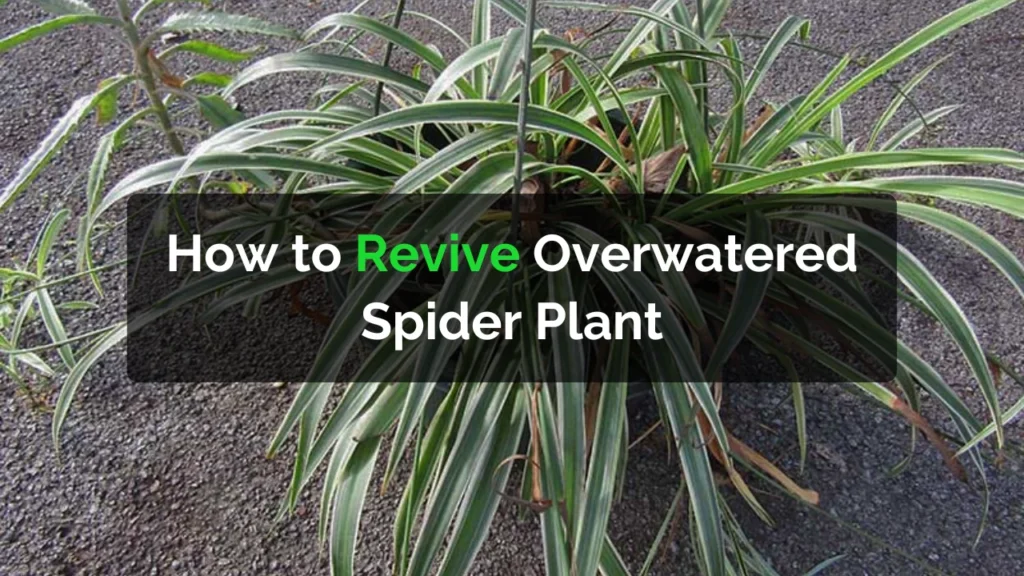Spider plants are hardy and adaptable houseplants, but even they can suffer from too much care—especially overwatering. If your spider plant looks droopy, pale, or has yellowing leaves, it may be drowning. Understanding how to revive an overwatered spider plant can help restore its health and prevent future issues.
Signs of an Overwatered Spider Plant
Before reviving your plant, you need to identify the problem. Common symptoms of overwatering include:
- Yellow or brown leaves starting from the base
- Soft, mushy roots or foul odor from the soil
- Wilting despite the soil being wet
- Mold or fungus on the soil surface
- Leaf tips turning brown
These are clear signs your spider plant roots lack oxygen due to excessive moisture.
Steps to Revive an Overwatered Spider Plant
1. Remove the Plant from the Pot
Gently take the spider plant out of its pot to inspect the roots. Use your fingers or a small tool to loosen the soil and expose the root system.
2. Trim Damaged Roots and Leaves
Healthy roots should be white and firm. Cut away any brown, black, or mushy roots with clean scissors. Also, remove yellow or dead leaves to reduce stress on the plant.
3. Let the Roots Dry Out
Place the plant on a paper towel or dry surface for a few hours to let excess moisture evaporate. This helps prevent further rot.
4. Repot in Fresh, Well-Draining Soil
Use a pot with drainage holes and fill it with a light, aerated potting mix. You can use a mix of regular potting soil, perlite, and peat moss. Avoid compacted soil that holds too much water.
5. Water Carefully
After repotting, wait a day or two before watering. Then, water sparingly and allow the soil to dry slightly between waterings. Spider plants prefer slightly moist, not soggy, soil.
6. Provide Proper Conditions
Place the plant in bright, indirect light and maintain good airflow. Avoid placing it near cold drafts or direct heat sources.
Preventing Overwatering in the Future
To keep your spider plant healthy:
- Water only when the top inch of soil feels dry.
- Use pots with proper drainage.
- Empty the saucer under the pot after watering.
- Adjust watering frequency based on temperature and humidity.
Maintaining the right watering schedule and growing conditions prevents stress and keeps the plant thriving.
Why Overwatering Happens
Overwatering often occurs because owners mistake wilting for dryness or stick to a strict watering routine. However, factors like pot size, soil type, and indoor humidity all affect how fast soil dries. Understanding your plant’s needs helps you water wisely.
FAQs
Can an overwatered spider plant recover?
Yes, spider plants are resilient. With proper care and root treatment, most overwatered plants can bounce back within a few weeks.
How long does it take for a spider plant to recover from overwatering?
Recovery usually takes 2 to 4 weeks, depending on root health and environmental conditions.
Should I cut off yellow leaves from an overwatered spider plant?
Yes, removing yellow or dead leaves helps the plant focus energy on new, healthy growth.
What type of soil is best for spider plants?
Use a well-draining potting mix containing perlite or coarse sand to prevent waterlogging.
How often should I water my spider plant?
Generally, water once a week in warm months and less often in cooler seasons, ensuring the soil dries slightly between waterings.
Final Thoughts
Reviving an overwatered spider plant requires patience, attention, and proper care. By trimming damaged roots, using well-draining soil, and adjusting your watering habits, you can help your plant recover and thrive again. Spider plants are forgiving and, with the right balance, will reward you with lush, green foliage and even new baby spiderettes.





